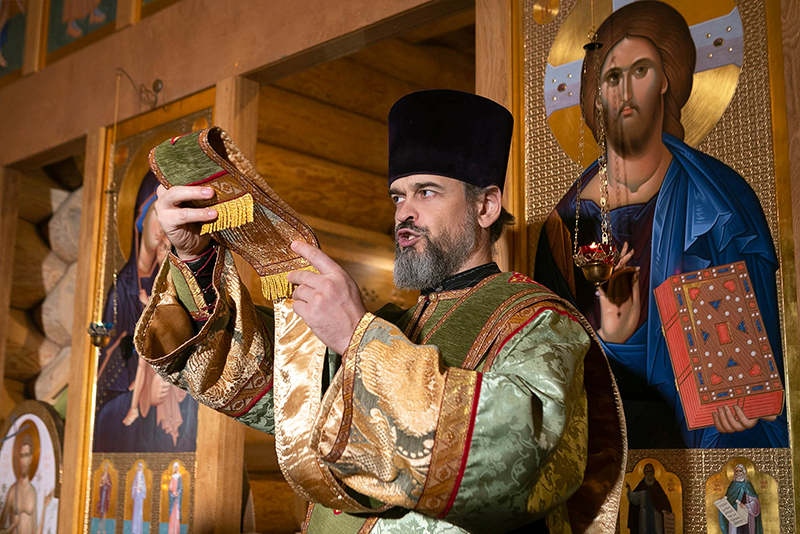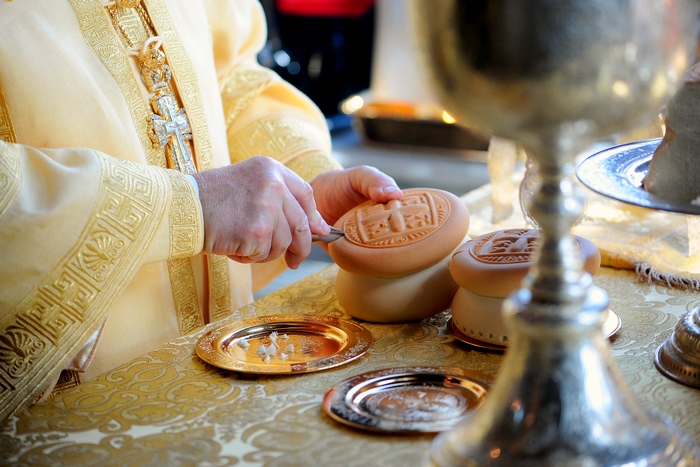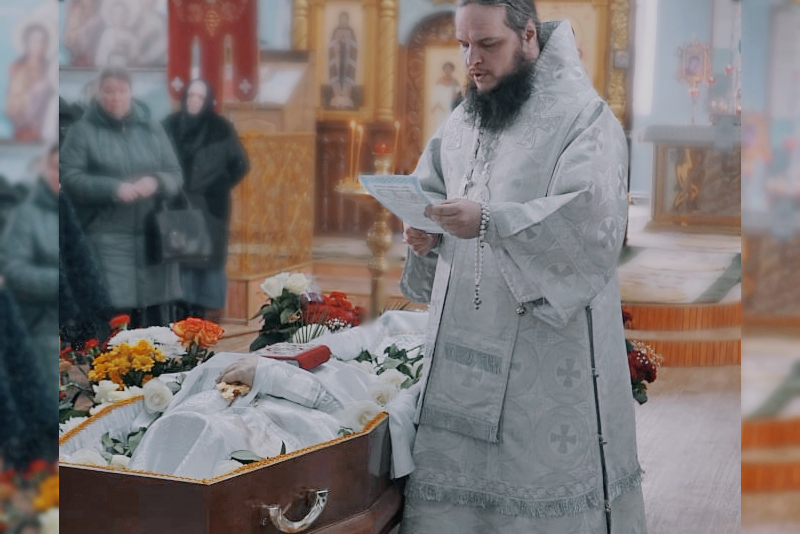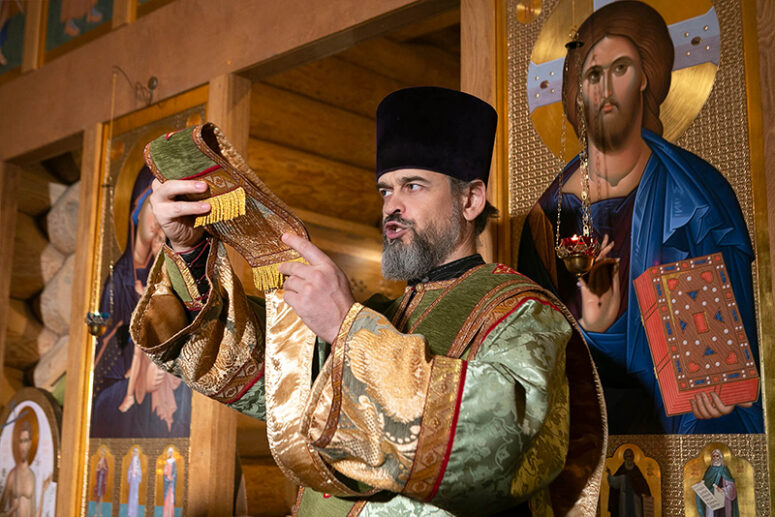
Origin
Jesus Christ, girding Himself with a towel, washed the feet of his disciples (John 13: 4-5) and commanded them to do the same (13: 14-15). This was likely the genesis of the Orarion, a distinctive part of diaconal liturgical vestments. A deacon (διάκονος, the common Greek word for servant or minister), girding himself with an orarion, conforms unto Christ in serving others.
The word orarion could come from several linguistic roots. The Greek verb ὁράω means “to see, to behold”. There are also three possible variants in the Latin language. Orarium means “a towel”, orare – “to speak, ask, or pray”; oris – “mouth”. All these options deserve attention. “Ὁράω”, because a deacon must maintain order and reverence in the church; “Orarium”, because the orarion resembles a towel in appearance and could have originated from it; “Orare”, because a deacon uses the orarion for offering prayers; “Oris”, because in ancient times, according to some sources, deacons wiped the communicants’ lips with an orarion, instead of the communion corporal used in the modern Church.
The practical and ritual use of towels has been widespread across several cultures. “Orarium”, in the sense of a towel, used for wiping the face, is known as far back as in classical Latin. In synagogue worship, a special veil was raised above the high place during the recitation of “amen”. It is, however, rather difficult to accurately trace the origin of the orarion. It was mentioned for the first time as an element of liturgical vestments in the canons of the Laodicean Council of 364, although it is clear from them that it was not a new object in the church.
Christian liturgical vestments did not differ much from everyday clothes, but after Christianity became the state religion of Byzantium, liturgical robes became more solemn, and their decorative design began to resemble the clothes of court officials and the emperor. Sometimes the emperor himself presented insignia to those close to him. In the case with the clergy, such gifts were ribbon-shaped. From this period, the orarion, previously looking like a simple towel, takes on its solemn and close to modern look.
Ancient and Modern Practices
In ancient times, according to various sources, the use of the orarion (or its prototype) was wider. During the divine service, deacons used it to call the congregation to prayer and to wipe the lips of the communicants. Outside of worship, a deacon would tie the ribbon-like girdle around his waist and use it for its primary function, while serving his neighbors.
In modern practice, the applied use of the orarion has become extinct. It is currently used exclusively during divine services for proclaiming litanies and deaconal exclamations, performing the sign of the cross and instructing the priest or bishop on the order of liturgical actions.
The rite of the washing of the feet was preserved in the Church. It is performed, however, not by the deacon, but by the ruling bishop, who girds himself with a long towel in a deacon’s manner.
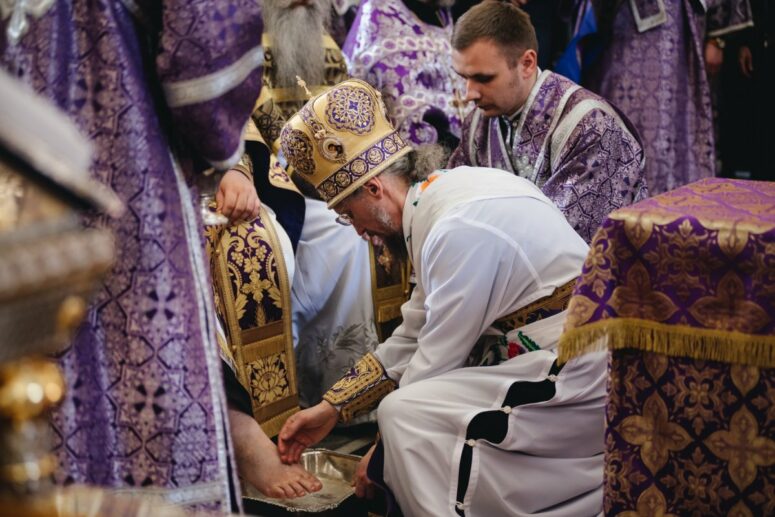
Types of Oraria in Modern Practice
The orarion , having lost its practical use, has turned from a towel into a long colored ribbon, attached to a deacon’s sticharion over his left shoulder.
The subdeacon’s orarion differs from the usual one only in the way it is worn and, optionally, in its length, increased for the convenience of wearing. Subdeacons wear it crosswise, in the same way as deacons before receiving the Body and Blood of Christ. Occasionally, there is a practice in which a ruling bishop rewards some meritorious acolytes with a right to wear an orarion in the same way as subdeacons.
However, strictly speaking, even the wearing of the orarion by subdeacons is a controversial issue. “The subdeacon has no right to wear an orarium, nor to leave the doors” says the 22nd rule of the Laodicean Council. The Patriarch of Antioch and a well-known interpreter of the canons, Theodore Balsamon calls the orarion solely a deacons’ attribute.
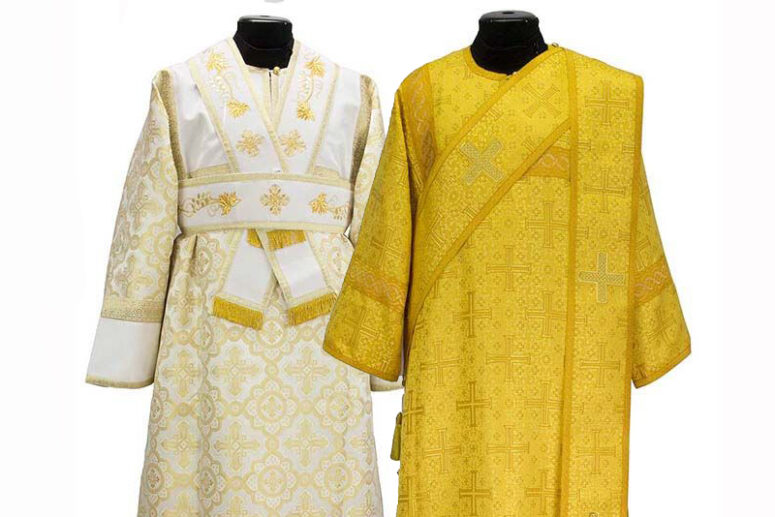
The right to wear a double orarion is a reward given to deacons in the Russian Church after five years of service, while in some Local Churches all deacons wear double oraria. Double oraria are decorated with nine crosses (in contrast to the usual seven), and sometimes embroidered with the words of the angelic song “Holy, holy, holy” (Isa. 6: 3). The once classic ornament in the form of a vine can now be very diverse, whereas the tradition of decorating double oraria with embroideries is gradually migrating to single oraria (especially the awarded ones).
Symbolism
Oraria symbolize the angelic belts described in Rev 15: 6, as well as angelic wings. Deacons symbolically represent cherubim and seraphim during a divine service. Apparently, this is the reason why the words of the angelic hymn are inscribed on double oraria (Isa. 6: 3). The ends of oraria flutter while walking, symbolizing an angelic flight. The fringe, also seen on other liturgical vestments, resembles bird feathers, indicating that these vestments are an image of the heavenly, angelic attire.

The crosses testify that a deacon is a servant of Christ and bears His cross, and their number signifies the seven grace-filled gifts of the Holy Spirit. The transverse stripes, embroidered at some distance from the two ends of oraria, symbolize the renunciation of the world for the sake of spiritual service.
The two ends of the orarion are symbols of the two Testaments – Old and New. Girdling himself crosswise with the orarion before Communion, a deacon joins its two ends into one, which signifies the unity of the two Testaments in Jesus Christ.

